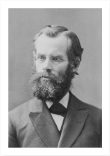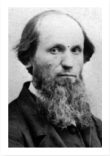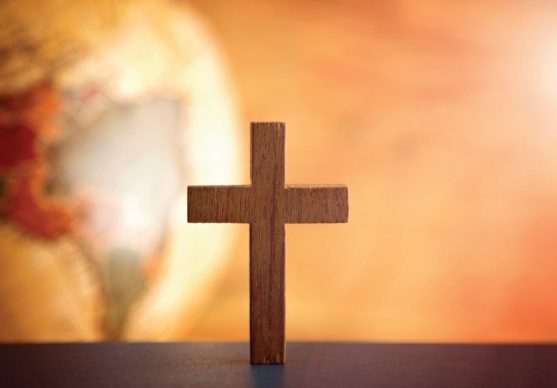
Today the Seventh-day Adventist Church is present in 212 countries of the globe, communicating in 535 languages with over 21 million baptized members.1 It’s hard to imagine that there was a time in our earlier history when our Adventist pioneers debated whether sending personal missionaries to the world was God’s plan. The young Adventist Church—headquartered in Battle Creek, Michigan, with just 3,500 members —was uncertain about the application of Jesus’ command to “go into all the world.” One view was that sharing the message with recent immigrants to the United States would fulfill Jesus’ purpose. The reasoning was that these new arrivals would then share the faith with family and friends back in their home country. The concept of sending missionaries throughout world was still a foreign idea. But this would soon change.

My college denominational history course taught me the story of our first overseas missionary, J.N. Andrews, who departed for Switzerland in 1874. A reading of Andrews’ biography reveals a tale of remarkable bravery, service, and sacrifice that still inspires. What a surprise to learn that the story of Adventist world missions began 10 years earlier in 1864!
Our own history reminds us that the DNA of our Pacific Union membership and work is built on the heritage of the missionary spirit.

Michael Czechowski was a Roman Catholic priest of Polish descent who accepted the Adventist message in Ohio. Without church endorsement or support, he departed for Europe to teach the Adventist message of a soon-returning Jesus. Converts were made in Switzerland, Hungary, Italy, and Romania. Many of them were soon pleasantly surprised to learn that there were believers in the United States who also accepted the three angels’ messages. Through the efforts of Czechowski and Andrews, the attitude of Adventists concerning a global missionary movement shifted from uncertainty to enthusiasm. Ellen White testified at the 1901 General Conference, “The vineyard includes the whole world, and every part of it is to be worked.”2 Since then, we’ve never looked back. The missionary motto became “From everywhere to everywhere,” describing this missionary zeal.
It's no coincidence that the establishment of the Pacific Union Conference occurred the same year that Ellen White endorsed global missionary work. Arizona, California, Hawaii, Nevada, Utah, and all points west comprised the challenging mission field within the United States. Our own history reminds us that the DNA of our Pacific Union membership and work is built on the heritage of the missionary spirit.
Since being elected Pacific Union president, I will occasionally read back issues of the Recorder. You can find every issue online, beginning with the inaugural issue of August 1, 1901. Each of those editions coincides with a presidential portrait displayed at our office. I reflect upon the challenges and opportunities for mission and service that each of these leaders considered in their day. When I read the Recorder, I catch a glimpse of their thinking by what they decided to put in print.
The very first paragraph of the very first issue of the Recorder is from the pen of Ellen White. Writing from Elmshaven, California, her opening words were, “God has a special work for His servants to do in the preparation of a people to stand in the great day of the Lord. This work is to commence in our own hearts. We need the faith that works by love and purifies the soul.”3 How beautifully she captures the mission of service we still engage in today. Toward the end of this essay, she reminds us, “Life is full of opportunities for the practical missionary. Every man, woman, and child can sow each day the seeds of kind words and unselfish deeds.”4 I catch a special radiance from the phrase “practical missionary.” People are needing more than just words today. What a timeless invitation to us to be practical missionaries who are engaged in work that helps, heals, uplifts, and restores. No need to go to far-off lands when practical missionaries are needed all around you.
Jesus gathered His disciples on the Mount of Olives several weeks after His resurrection. As He prepared to depart to heaven, there was one more important thing to remember: “But you shall receive power when the Holy Spirit has come upon you; and you shall be witnesses to Me in Jerusalem, and in all Judea and Samaria, and to the end of the earth” (Acts 1:8, NKJV). Our Lord’s command in the first century retains all its singular purpose for the Adventist Church today. We must intentionally plan and act for the salvation of all the different people in our spheres of influence. People who resemble us culturally (“Jerusalem and Judea”). Folks who are overlooked and rejected (“Samaria”). Even those who oppose our values (“and to the end of the earth”).
We are at our best as Adventists in the Pacific Union when we individually choose to don the garb of a practical missionary. Perhaps someone will read these words and be drawn to overseas service. Or another may sense the invitation from God to enter full-time service as a pastor or teacher. But no matter our age, job, education, gender, or home address, we are all called by God to heed Jesus’ words and be witnesses to Him.
The following words have invited generations to a life of purpose through service. What is Jesus calling you to do in His name today?
Do all the good you can,
By all the means you can,
In all the ways you can,
In all the places you can,
At all the times you can,
To all the people you can,
As long as ever you can.5
1 Office of Archives, Statistics, and Research, General Conference of Seventh-day Adventists.
2 Ellen G. White, “Our Duty,” The General Conference Bulletin (October 1, 1901), par. 17.
3 Ellen G. White, “True Missionary Work,” Pacific Union Recorder (August 1, 1901), par. 1.
4 Ibid., emphasis added.
5 Attributed to John Wesley.
_____________________________
Bradford C. Newton is the president of the Pacific Union Conference.






